This post may contain affiliate links.
In 2021, we went on our first RV trip to Baja California and in this post we’ll share everything we learned and tips for your Baja camping adventure. This guide will cover getting a Mexican Tourist Card, Baja auto insurance, Mexican customs restrictions, border crossing into Baja, driving in Baja, getting fuel in Baja, safety, beach camping, and other resources for RV travel in Baja.
After you’re done with this guide, check out our podcast with Paul Pritts, a good friend of ours who has been traveling to Baja since he was a teenager and now leads groups for meet-ups on the beaches there.
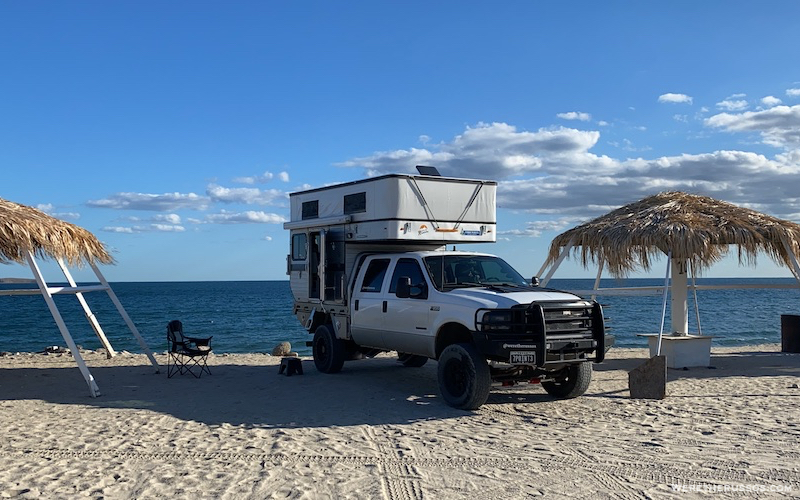
RV Travel in Baja
Going to Baja in an RV has been on our travel bucket list since we started full-time RVing in 2015. When Bob Wohler’s of Off-Road Safety Academy announced he was offering a guided tour through Baja California, we both jumped at the opportunity. To find a tour like Bob’s, check out our Overland Tours and Events Roundup.
The Baja peninsula is a popular Mexico travel destinations for RVers and our week long trip did not disappoint. Watch our Baja travel video below or keep reading.
Table of Contents
- Mexican Tourist Card (FFM) for Baja
- Baja Auto Insurance
- Mexican Customs Restrictions
- Border Crossing by Land into Baja Mexico
- Driving in Baja California
- Gas and ULSD Diesel in Baja
- Military Checkpoints
- Beach Camping in Baja
- Food and Drink in Baja California
- Safety and RV Travel in Baja
- Border Crossing by Land Back to United States
- Resources for RV Travel in Baja
Mexican Tourist Card (FFM) for Baja
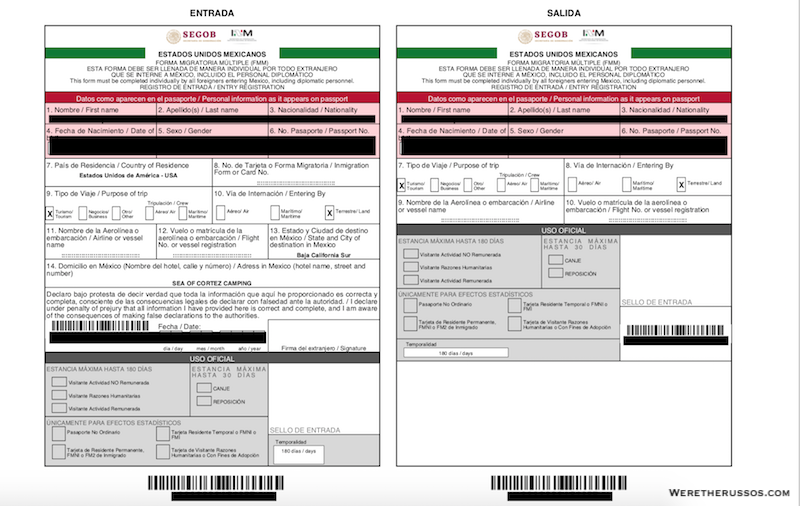
We each applied for a Mexican Tourist Card or FFM for our Baja California trip. The process to obtain the FFM was very easy through the Instituto Nacional de Migración website. After paying $575 Pesos per application we each received an email to download and print our Mexican tourist card.
You can also obtain a FFM at the INM office when you cross the border into Mexico. Since we were on a group tour, everyone applied for their FFM online and brought a printed copy. Make sure to print a copy of your FFM receipt to show the INM office at the border crossing. Otherwise, you may have to pay the fee again before you can get the official stamp, which someone on our tour experienced.
There are several insurance carriers based in the United States that specialize in Baja auto insurance policies. Because we were on a guided Baja caravan trip, we were required to purchase our auto policy through Baja Bound. One of the reasons everyone on the group tour was required to use the same Baja insurance carrier was so that if any of the RVs had an issue, there was only one number to call rather than trying to figure out who has which insurance.
If you’re not required to purchase through a specific insurance carrier for your Baja RV trip, be sure to shop around and check with your U.S. auto and RV insurance provider to see if they offer coverage in Mexico. We’ve used Progressive and Geico for our auto and RV insurance in the United States and both companies offer auto insurance coverage in Mexico.
Make sure to do your research and understand the policy you are getting. In my article on RV Safety and Preparedness, one of the tips is to understand your policies before you need them. Talk to the insurance agent and read through the policy so you know what is covered and what is not covered.
Baja Bound Insurance Experience
Baja Bound is an insurance broker. They work with multiple companies so you have options when deciding which policy is right for you. The experience of purchasing our auto insurance through Baja Bound was very good. Shauna was our contact and she promptly responded to all our questions via e-mail and on the phone.
Since we own a heavily modified 2000 F350 truck and pop-up camper we wanted to make sure the aftermarket upgrades were covered by the policy. We were able to set a cash value for the truck and a separate cash value for the camper. For nine days and the maximum liability limit, our policy ended up costing just over $300.
When you get a quote through Baja Bound, you can get the daily rate, 6 month rate, or an annual rate. Since we were on a seven night, eight day Baja tour, we opted for the daily rate. We also had the option of extending our coverage while we were there but we’re told it had to be done during the week while the office was open. If you plan to spend an extended amount of time in Baja, it may be more economical to purchase a six month or even an annual auto policy.
The good news is we did not need to use our Baja Bound insurance while traveling in Baja so I can’t provide any feedback on claims experience with Baja Bound.

Driving a Financed Vehicle in Baja
Are you driving a financed vehicle to the Baja peninsula? Be sure to contact your lien holder about their requirements for taking the vehicle across the border into Mexico. Below are some articles we found on driving a financed vehicle to Baja including information on whether or not you need an official letter of permission.
Crossing Into Mexico with a Financed Vehicle
How to Drive Financed Vehicles into Mexico
Vehicle Permits and Financed Vehicles
Mexican Customs Restrictions
Whenever we travel to another country, we always look up the customs regulations for that country. This is especially important when traveling in an RV because we’re bringing our home on wheels and what’s allowed in one country may not be allowed in another or the amount may be limited. Going to Mexico is not our first international border crossing, we have visited several Canadian Provinces in an RV.
So what should you bring to Baja? Or more importantly, what can you bring to Baja Mexico? Visit the Mexican Customs website for the most up to date information on how to clear customs at the Baja Mexico border. There is a section on items/goods you cannot bring into Mexico as well as answers to other questions.
To make it easy on ourselves, we arrived with a few beers chilling in the fridge and opted to purchase fresh produce and other food items as we traveled around Baja.
Since we purchased our insurance through Baja Bound, we read many of the resource articles on their website about traveling to Baja in a vehicle. This post details what items you can bring driving into Baja.
Border Crossing by Land into Baja Mexico
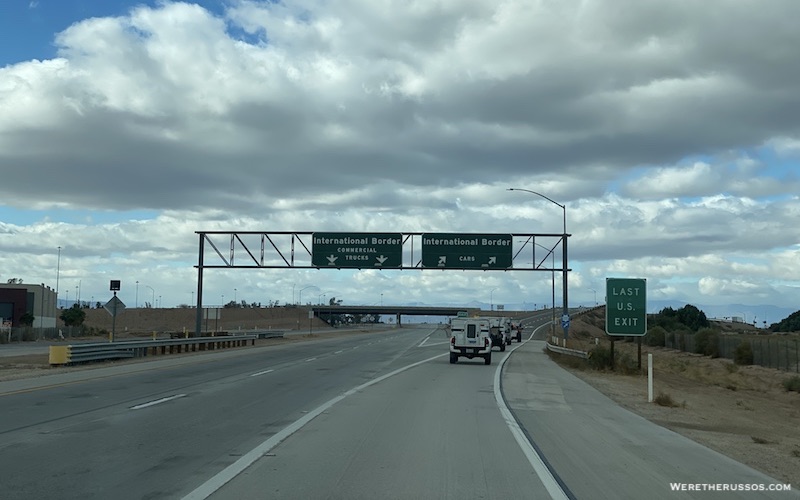
There are several border crossing options when driving from the United States to Baja Mexico. Our caravan of nine campers crossed at Puerto Mexicali II on a Sunday morning and had a very smooth border crossing.
Prior to crossing, our guide held a group meeting and checked everyone’s documents to make sure we had everything in order. He had sent a very detailed email to each of us so we knew what we had to bring. When we arrived at the border, our tour guide presented an official invitation letter from the Baja Tourism Board to the immigration office.
All nine vehicles pulled into the inspection area where the agents asked us questions and inspected our campers. There was also a dog working the area and sniffing the vehicles. We were not asked to open our fridge or any of the storage bays and cabinets in our camper. The border agent was very friendly and had limited English. After the inspection we walked over to the immigration office to show our passports and the “Entrada” portion of our FFM and get the “Salida” portion stamped.
Before You Go Checklist
Whether you’re going on a guided tour of Baja or exploring on your own, put together your own Before You Go Checklist. This list may include your RVing tool kit, essential RV gear, your travel water filter and items specific for international travel.
This Before You Go Checklist contains items that you may not have considered, but are good to have on your list. It’s also good practice to check the U.S. Department of State’s page on traveling to Mexico for the latest information and travel advisories.
One important tip I want to share with you is to bring copy of your FMM receipt. When we crossed the border into Baja, a couple people in our group did not have a printed copy of their receipt and had to pay the fee again at the immigration office.
Driving in Baja California
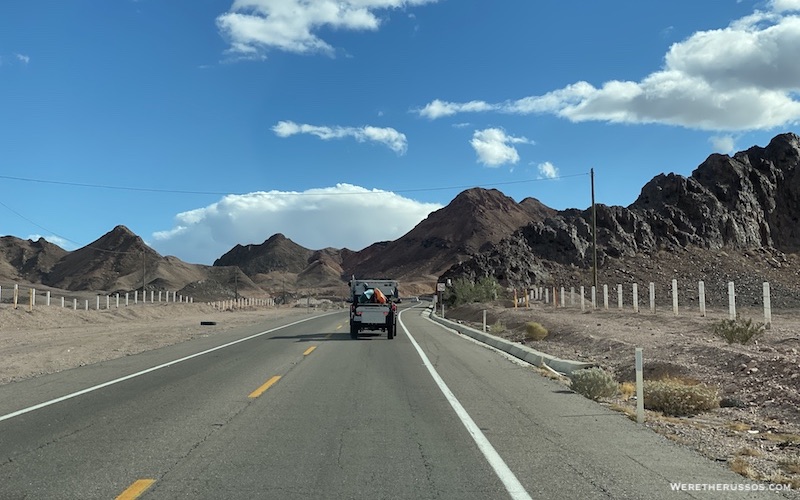
We drove a good portion of Baja California, but we did not make it down to Baja California Sur. Our experience of driving in Baja was very good. The roads were well paved, the road signs were easy to read and follow, and when we did get off the pavement, the sand was hard packed with some ruts and washboard sections.
Despite being well paved, many sections of the road were very narrow with no shoulder and drop offs on either side. We encountered many large semi-trucks which had us slowing down and hugging the edge of the pavement. The local drivers tended to speed and would pass at any opportunity, even in blind curves – so watch out! We got in one situation on a two lane road where we had cars 3-4 wide all passing at the same time! Many of our road rules don’t apply in Mexico so be very aware.
To give you an idea, we drove Mexico 5 south through San Felipe to an off-road detour to Coco’s Corner before getting back on Mexico 5 towards Mexico 1 to Bahia de los Angeles. From there we made our way north on Mexico 1 to Ensenada then drove Mexico 3 to Tecate then ended up on Mexico 2D, which is a toll road that got us to the Otay Mesa Land Port of Entry. In total, we drove over 800 miles in Baja California.
Baja California Maps
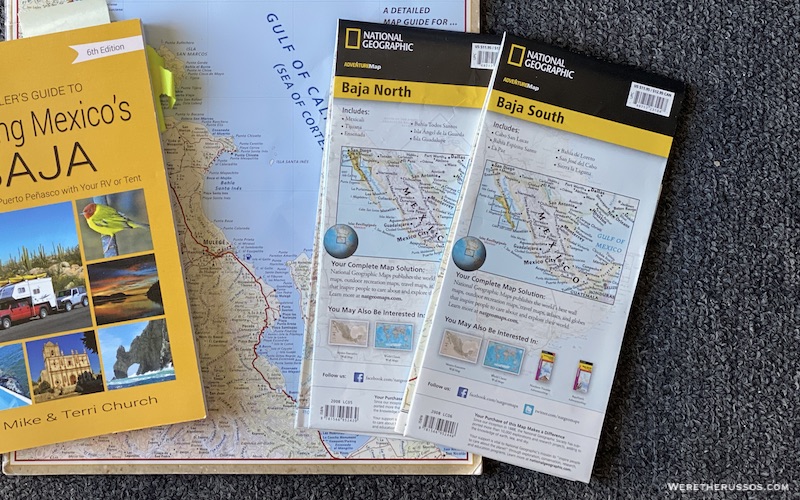
We downloaded the NatGeo Baja California map on our Gaia GPS mobile app, which came in very handy. The app also tracked our entire trip which we can export or share with friends. See our post on Essential Apps for RVing for other apps we use while traveling.

If you prefer to have paper maps, both of NatGeo Baja maps are available for purchase on Amazon.
Tips for Driving in Baja
Do a quick search for Baja driving tips and you’ll find some common tips that are mentioned over and over again. The most popular one we came across was don’t drive at night, which we never did.
Once we got on the road in Baja we understood why it’s not recommended to drive at night. The roads can get very narrow and sharing the road with large trucks when it’s dark just did not seem like a good idea. Plus, shoulders often had a steep drop off, if there was a shoulder for that section of the highway.
Baja Bound has an extensive article on Baja driving tips that includes paperwork to have with you and dealing with the police during traffic violations.
Gas and ULSD Diesel in Baja
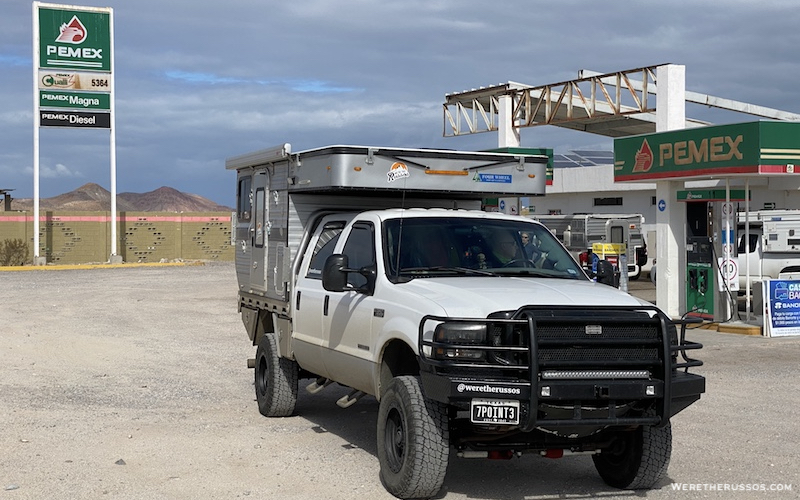
Pemex (Petróleos Mexicanos) is the state owned chain of gas stations in Baja. We did see Arco, BP and Chevron stations throughout our trip, but we only added fuel at Pemex. Out of the nine campers on our Baja trip, five ran on gas and four ran on diesel, including our truck. One of the diesel trucks required Ultra Low Sulfur Diesel (ULSD) which was available at every station we stopped for fuel.
The NatGeo Baja map had gas and diesel stations clearly marked, which made it easier to plan our next fuel stop. Our guide recommended filing up as often as we stopped because the next station could be out of fuel.
Since we have a 51 gallon after market fuel tank, we didn’t have to fill up as often as other people on the tour. At the Pemex station, there was always a separate area for the diesel pumps and these have a black handle, not the green that we’re used to in the United States.
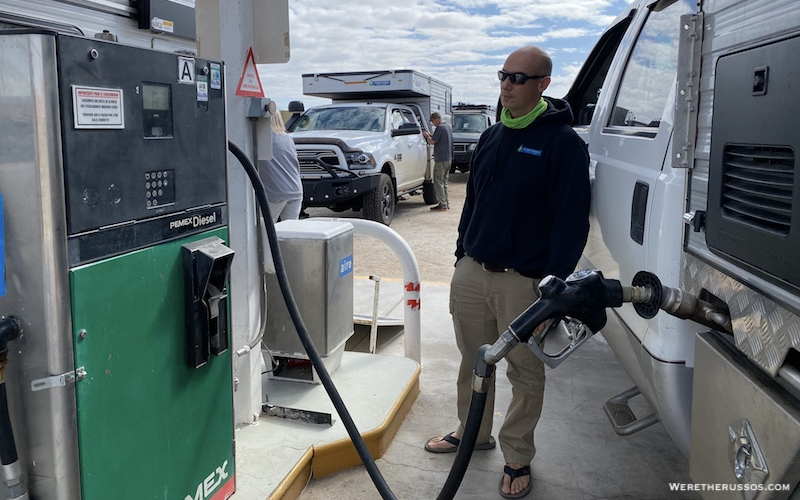
At each gas station, we had to wait for an attendant to come by and pump the fuel for us and we always paid in cash. The fuel prices didn’t vary too much in Baja California, but we noticed it was less expensive on the Pacific side compared to the Sea of Cortez side.
Most of the gas stations had very clean bathrooms with toilet paper, trash cans and a market to buy snacks and supplies. At one Pemex station we even bought a delicious seeded watermelon out of the bed of a truck in the parking lot.
We also saw guys on the side of the road selling fuel out of the back of their trucks from bottles. I don’t know if this was just gasoline or if they had diesel but unless you were running on fumes, I would wait until you are at a gas station as you don’t want to run the risk of getting contaminated fuel.
Military Checkpoints
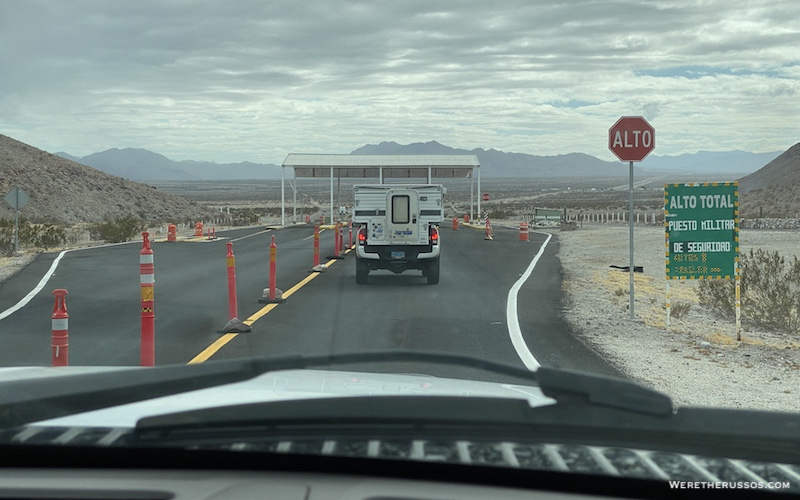
Depending on where you go in Baja, you’ll likely come across one or more military checkpoints. The first military checkpoint we encountered was right before San Felipe heading south on Mexico 5. That one felt slightly intimidating because it was our first one and we didn’t know what to expect. They asked us where we were going and asked us to open the camper so they could take a look inside. Then we were waved through the check point and pulled over to wait for the rest of the group.
These military check points are part of traveling in Baja and vary in terms of how in depth they examine the camper and what questions they ask. At one military check point, they opened both of our backpacks and looked through the contents.
Everyone we encountered was friendly and some spoke a very limited amount of English. Kait and I both used the tiny bit of Spanish we knew to engage in casual conversations.
A note regarding medications – when our backpacks were checked, the officer went through each pocket, looking over the items. Of note, he pulled out the bottle of generic Excedrin I carry and asked about it. When he realized it was “like Aspirin,” he seemed content and put it back. If you do carry prescriptions, make sure to look up what documentation you need to show it’s a prescription. We would advise against putting any pills, etc in unmarked containers and they may raise concerns if you’re searched.
Beach Camping in Baja

There is plenty of beach camping in Baja California on the Sea of Cortez side as well as the Pacific Ocean side. Before we started our Baja trip, our guide recommended the book Traveler’s Guide to Camping Mexico’s Baja: Explore Baja and Puerto Peñasco with Your RV or Tent. It’s a good resource to have before and during your Baja trip.
Beach camping on the Sea of Cortez side was one of the highlights of our trip through Baja. Our favorite spot was Playa La Gringa in Bahía de los Ángeles. Expect to be boondocking as it’s a primitive camping area with no hookups or amenities. There were a few trashcans scattered along the beach. It was very peaceful and quiet during our stay and the water was nice and calm for kayaking.
Since we were on a guided tour, we didn’t have to worry about finding campgrounds each night, but if we were to go back on our own, we would also reference iOverlander to finding camping in Baja.
The campground amenities in Baja varied as did the price. We stayed at basic campgrounds without any hookups and very basic amenities. These campground cost between $10 and $40 per night and one of the most basic campground was also the most expensive.
Some campgrounds in Baja had flushing toilets and cold water showers, others had hot showers, flushing toilets and even fresh water to fill your tanks. Read our post on water filtration systems for RVs.
Depending on the campground, there may or may not be someone there to greet you and take your money. At the first campground we stopped at, it looked deserted. We all parked, set up camp and enjoyed the rest of the day. That night while we sat at the campfire, a car drove up and a guy came out to collect the camping fee. It was $40 US and the most expensive of the trip. Since it was already dark and we were all set up, we paid the fees but had we known prior to arriving, we would have looked for a less expensive option.
None of the campgrounds we stayed at had toilet paper in the bathrooms so we always made sure to bring our own.
Food and Drink in Baja California
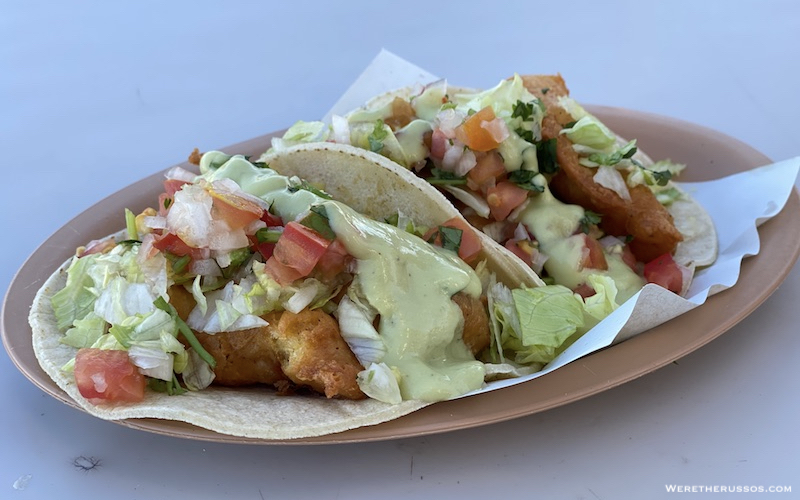
While one of the perks of RV travel in Baja is having your home with you, we still enjoyed sampling the local fare.
Of course the number one item on our list of things to eat in Baja were fish tacos. China’s Place walk up taco stand in Bahía de los Ángeles had great made to order tacos. We enjoyed the fish and shrimp tacos so much we ended up going back for round two. There is a convenience store next door where you can grab an ice cold beer to enjoy with the tacos.
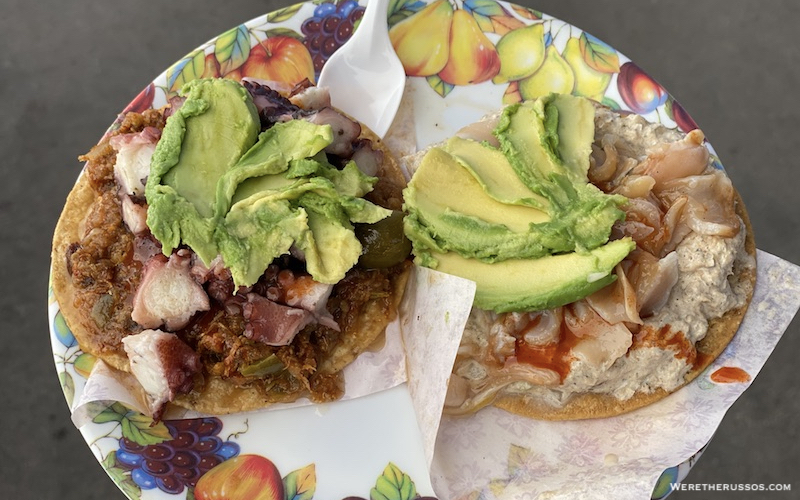
The best food we had in Baja were tostadas at La Guerrerense in Ensenada. We decided to break away from our tour on the last day in order to try these amazing tostadas. Everything we ordered was amazing including the shrimp ceviche and the tostada especial with cod and octopus topped with sliced avocados.
There was no shortage of great food in Baja California. With the exception of the tostada spot, all the restaurants we found were by walking around. One of Joe’s favorite restaurants served Sinaloa style grilled chicken with freshly made tortillas.
Safety and RV Travel in Baja
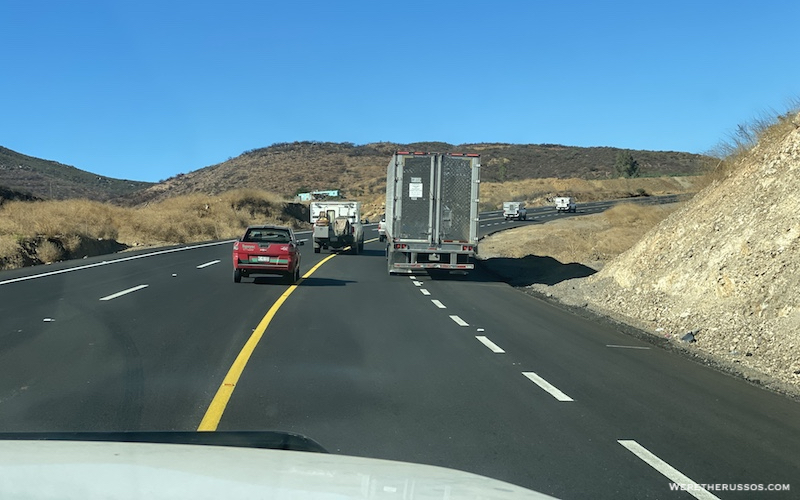
When we told friends and family we were going to Baja, one questions we kept getting was “Is it safe to travel through Baja California?” We did not have any safety concerns traveling in Baja Mexico. One reason was because we were in a group and there’s safety in numbers. Another was because Bob, our guide, was well versed in the area and we knew we were in good hands. As a friend Paul put it in our podcast with him on Baja, “Just don’t do anything stupid. Use common sense, and you’ll be fine in Baja.”
That said, it is important to be prepared and have safety plans in place when you’re out on the road. The current times have taught us how crucial it is to not get caught off guard and have to scramble when emergencies arise. It’s also important to not let fear stop you from living the life you want, but preparing for all scenarios will serve you well if things go wrong.
We recommend taking steps to ensure you’re prepared for whatever comes your way while traveling. Read our post on RV safety.
Border Crossing by Land Back to United States
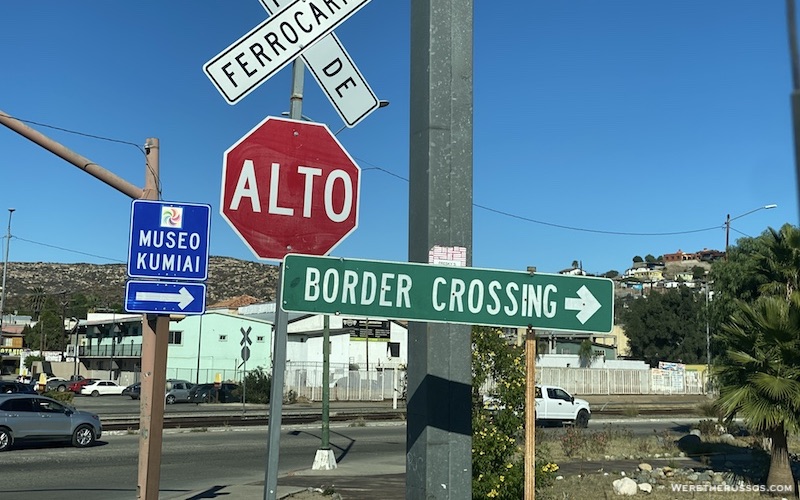
Crossing the border back into the United States from Baja California was quite the memorable experience for us.
We got in line at the Tecate Port of Entry around 1 p.m. on Sunday afternoon and we could see the truck campers from the tour were about 20-30 cars in front of us. The line was inching along when we received a call from our guide telling us that the border hours of operation had changed due to the pandemic. Any vehicles that didn’t make it passed the gate by 2 p.m. would have to go to another border crossing.
Unfortunately we missed the cut off by a few vehicles and drove to the Otay Mesa Port of Entry. We ended up in line for five hours before finally getting back to the U.S. The big lesson here is to double check the hours for the port of entry and don’t assume it will be open during the hours posted (Tecate’s border crossing was still listed as being open until 10pm). Also, have at least one backup border crossing with driving directions.
While waiting in line in Otay Mesa to get back to the U.S., we saw a wide variety of food vendors, trash collectors, and even entertainment along the route. There were also signs for public restrooms, which we did not use since we had our portable camping toilet in the camper.
Be prepared for a long wait (we were in line at Otay Mesa for over five hours) and don’t forget to check the U.S. customs regulations on things such as items to declare, duty-free limits, and prohibited items. Check out Baja Bound’s post on re-entering the U.S. from Mexico.
Resources for RV Travel in Baja
There are a variety of resources on RV travel in Baja. Here is a list of the ones that we used (some have been mentioned above):
- Baja Mexico Auto Policy through Baja Bound
- Traveler’s Guide to Camping Mexico’s Baja
- iOverlander Mobile App
- NatGeo Baja maps for Gaia GPS Mobile App
- NatGeo Paper Maps of Baja
- Mexican Customs
- U.S. Customs and Border Protection
That’s it! I hope you found this post helpful in planning your own RV trip to Baja California.

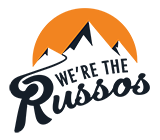
Hello,
We’re hoping to travel to Baja this fall in our 4WD camper which runs on ULSD Diesal. We were wondering how far south you an travel and reliably get it. We have an auxiliary after market fuel tank so we can put in sixty gallons at a time. What is the furthest south city where we’ll be able to fill up? We’d ideally like to get to Loreto. Thank-you very much for any help you can give us.
Thanks,
Mary
Hi Mary – from my understanding and research, all of Baja has ULSD. During our trip there, most of the other diesel trucks required ULSD and they had no problems. I would suggest doing some more research to confirm this before going down because there is no indication on the pumps, etc what kind of diesel it is. I also remember reading that even those who knew Spanish well and could ask the attendants, the attendants had no idea.
Hi guys, we love following your adventures! We are retired and enjoy taking road trips in our 30 ft fifth wheel. Is this a trip we can take without guides and feel safe and able to find good spots to camp in a bigger rig? We want to do a trip from Baja to Canada. We need all the advice we can get! Thanks! The Greshams
We felt safe but that’s all relative and how comfortable you are. Speaking Spanish would definitely help (we don’t) but you can get along with only English. There’s all different sizes of camping options and most places we went had more than enough room for larger rigs. Just be careful of driving in sand.
hi guys, my question for you: do i need a special permit to drive a utility trailer 6×12 in baja california with my artwork?
thank you
I don’t believe you need a special permit but you need to have the trailer registered in your name. I’d suggest asking the insurance company when you call to get your Mexico vehicle insurance as they will have a better idea.
Great read on travelling Baja!
Very informative and down to earth.
We’ll be back for more of your stories and advice.
Safe travel
Thanks for all the useful info! We are headed there in October! What tour group did you use?
We went with Bob of Off-Road Safety Academy.
Hi Joe & Kait, love the information, thanks. Going to Mex in a 4×4 is something my husband and I have talked about doing.